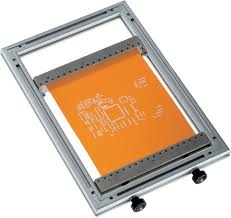 SMT stencils are quickly replacing traditional prototyping tools like breadboards for printed circuit board design and construction. Several important advantages of SMT stencils are: smaller components can be used, most SMCs are less expensive that through hole components, the automation process is easier, the ability to mount SMDs to both sides of a board, with lower resistance high frequency parts perform better.
SMT stencils are quickly replacing traditional prototyping tools like breadboards for printed circuit board design and construction. Several important advantages of SMT stencils are: smaller components can be used, most SMCs are less expensive that through hole components, the automation process is easier, the ability to mount SMDs to both sides of a board, with lower resistance high frequency parts perform better.
The following steps generally describe the process of using a Prototype SMT Stencils for your custom printed circuit board construction:
1. Secure your board to a work table using some type of right angle support on the bottom and top of the board. Nothing should overlap the frame and contact the board’s surface
2. After aligning the stencil over the SMT pads, use some tape to secure it
3. Apply a bead of solder paste along one side of the prototype stencil
4. Using a squeegee, make a single pass over the apertures to apply the solder paste
5. You can now remove the stencil
6. Place SMDs into the solder paste
7. Use your manufacturers preferred method to heat the board for re-flow solder

KOMENTAR